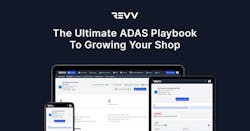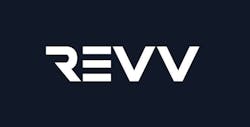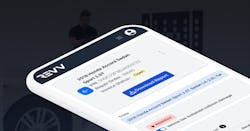A wave of consolidation has swept through collision repair shops lately. Independent shops and small MSOs have realized the best way to create more value in their shops is to partner up or scale up – both of which are easier said than done. The traditional advice given to shop owners leaping from single shop to MSO is to create growth playbooks, or SOPs, that detail processes they used in their first shop that they can replicate in further ones.
But what’s been overlooked is how shop owners can leverage ADAS calibrations to scale their shops even more. It’s a shame, since ADAS should be thought about not just as a necessity – but as a high-margin, low-cost business opportunity you can roll out across your rooftops.
In this piece, we bring you the ultimate ADAS playbook you can use to grow your shop(s). Here are all the key components you should be thinking about.
Decide who will perform ADAS calibrations
If a car comes into your shop for repair, chances are there will be associated ADAS calibrations that must be performed in order for it to be safe to drive. The first thing any collision shop owner should decide is who will perform these calibrations.
There are two options: bring ADAS in-house, or partner with an ADAS repair shop.
The usual factors to consider are your shop's capacity, whether you have technicians educated enough to perform calibrations, if your shop has room to create a compliant space, how sending vehicles to another shop will affect the customer experience.
A compelling business factor is margins. ADAS calibrations as a revenue stream have more than 70% margins compared to margins in general repair shops, and can increase repair costs by 37.6%. This means, if you bring ADAS in-house, to earn more per shop you don’t have to expand service capacity or spend more on advertising. You just have to capture more OEM-mandated ADAS calibrations on cars that are already coming into your shop.
Develop a process for communicating about ADAS
Once you decide who will perform calibrations, the next step is to create a process for communicating about the end-to-end ADAS repair with customers, partner shops, and internally.
Your customer’s first point of contact in your shop must have some basic ADAS knowledge to prep them on the requirements of their repair. It’s good practice to discuss a customer’s understanding of ADAS, and to decide who will explain to customers what specific ADAS calibrations must be made to their vehicles, how long it will take, and how they’ll be billed.
Internally, body and paint techs must also have an understanding of ADAS so they can take appropriate precautions. For example, some components – like a bumper cover – need to be left off the car before it’s calibrated.
Finally, establish a process with partner ADAS shops. The first key question to ask is who will be responsible for accommodating an appropriate time and interaction to diagnose ADAS repairs. We’ve seen time and time again that, if this isn’t made explicit, collision shops will think it’s the ADAS tech’s responsibility, and vice versa – and nothing gets done because no one takes the first step. The second question to ask is around billing. What’s the billing process between the ADAS tech and collision shop, and between the collision shop and the end customer?
Think about pricing models
Speaking of billing, ADAS is a new service, and there aren’t established best practices yet for how to price calibrations. You can either price based on dollars, or labor time. Choose whichever is easier (a) for customers to understand (b) to roll out without friction across shops.
Choose tools that identify what calibrations you should do and how (if in-house)
Choose equipment that will help you identify and perform calibrations accurately. Most shops manually search through OEM portals to find which ADAS repairs need to be made. But, since there are over 500,000 unique ADAS procedure combinations based on variables like make, model, trim, package, and model year, this ‘searching process’ can take up to 60 minutes per car.
A second common approach to diagnosing ADAS is using scan tools which, simply put, don’t work. Proof that both approaches are bad are in the statistics. Less than 15% of estimates include the word ‘calibrate.’
Instead, you should look for an ADAS tool that:
- Tells you when a calibration needs to be done with accuracy
- Tells you how to perform the calibration
- Has coverage across every popular make and model
- Works with your existing tools
- Can be rolled out to other shops to economically
We built Revv to tick all of these boxes. Our LLM aggregates up-to-date documentation from all the latest major car databases and OEM guidelines, identifies which ADAS calibrations need to be done from your repair estimates, and shares the relevant calibration instructions – all while integrating with estimating software you’re already using, like CCC ONE.
This means you can easily generate ADAS reports for each vehicle with one click using Revv, which allows partner shops to do the same through ‘sub accounts’.
In addition to this, Revv serves as an end-to-end ADAS workflow software that streamlines every aspect of your ADAS playbook:
- Increased Revenue: Revv captures more OEM-mandated calibrations, capturing more revenue at higher margins.
- Communication: every stakeholder involved in an ADAS repair can communicate through Revv. You can add as many users with specific roles and visibilities into different aspects of the platform.
- Billing: create custom pricing structures to generate quotes in seconds. Soon, shops will be able to price calibrations by operation type, labor hours, and configure luxury-make surcharges and tier-based pricing
- Bookkeeping: handle all back-office accounting operations through Revv.
- Ease of Use: get on-the-go access with a mobile and tablet experience, so you can always keep track of what’s happening in your shops.
In conclusion, ADAS is a great new business opportunity. For shops scaling into MSOs, how much success they derive from this opportunity depends on how clearly they’ve laid the groundwork for the processes that power ADAS repairs.


